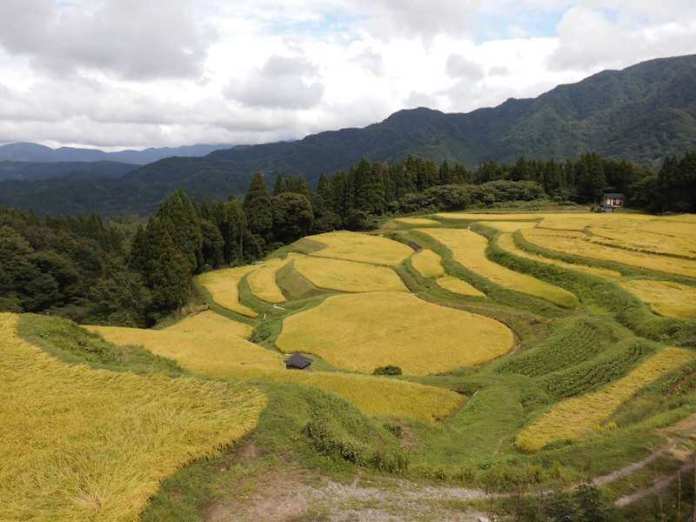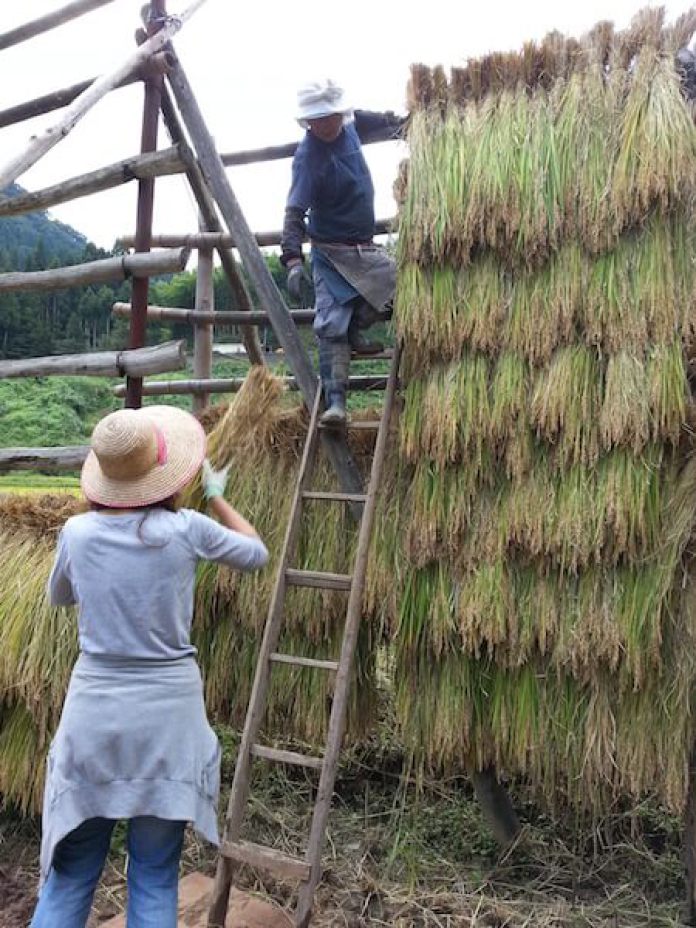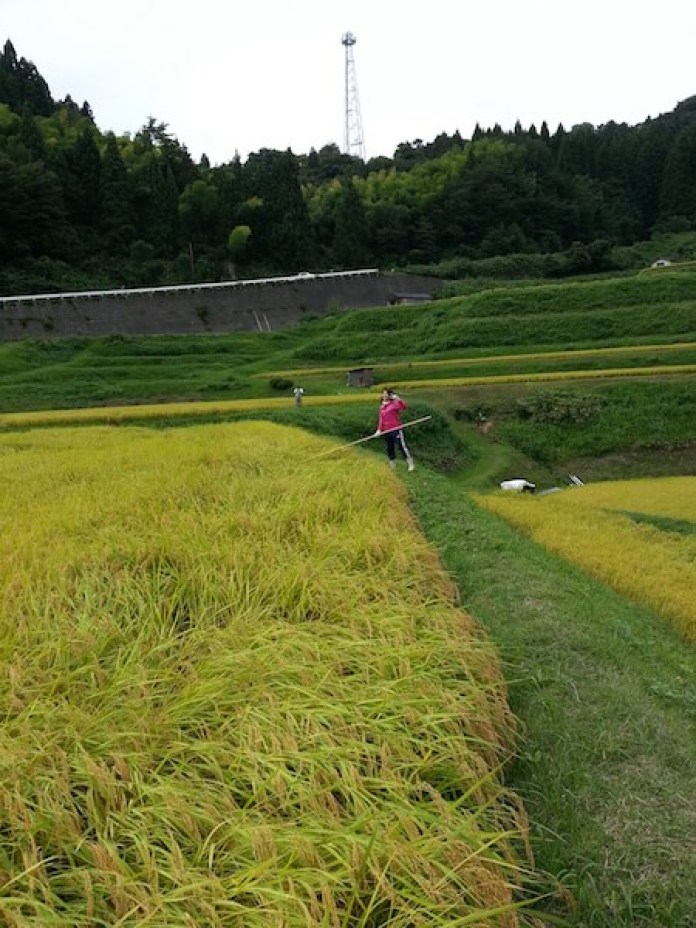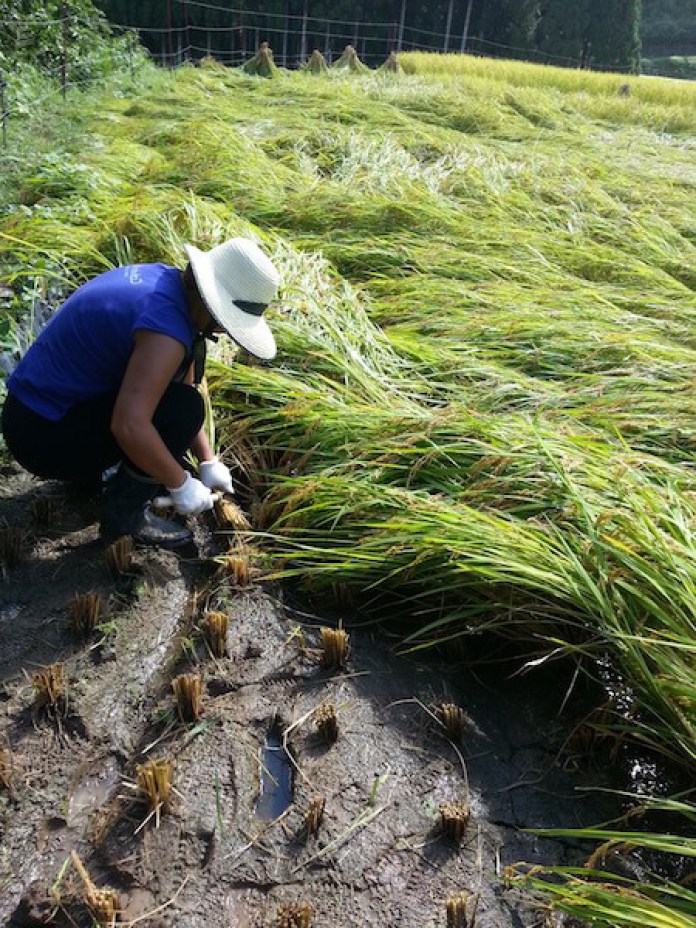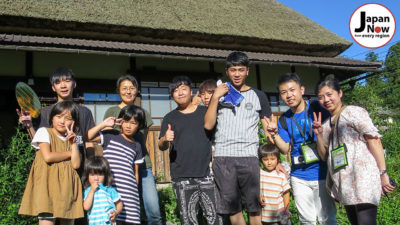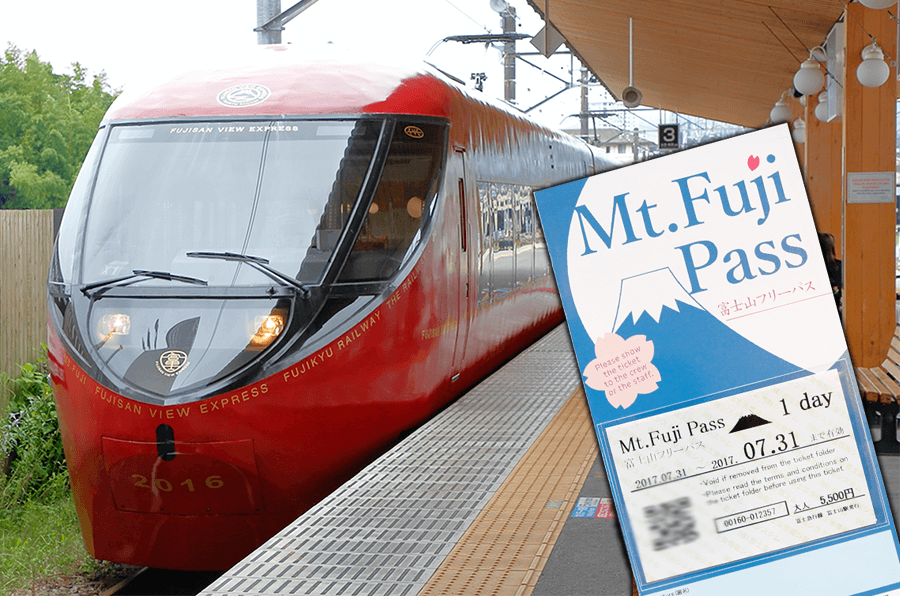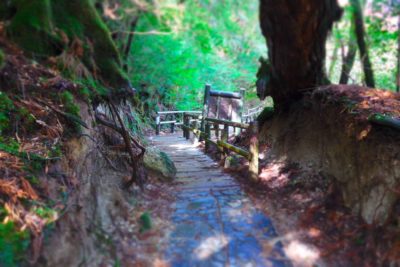Rice is a staple in Japan and has been cultivated for more than 3,000 years. Still, traditional rice harvesting in Japan is a significant part of Japanese culture. In the Edo period, rice yields were a measure of a lord’s wealth, and when asked about income, they would usually say the amount of rice receive each year. The most delicious rice in Japan is said to come from the Niigata region of Japan, and some farmers there still practice traditional harvesting of rice.
Traditional Japanese Rice Harvesting: Planting
To ensure quality rice, farmers first have to create quality soil. This process begins when the Sakura trees start blooming and ends when the earth is deemed ready. I visited a traditional rice farming area in Hyogo Prefecture called Kami-Cho. It has a terraced rice field that belongs to Japan’s top 100 most beautiful rice fields. The harvest for this particular rice field starts in early September.
Traditional Japanese Rice Harvesting: Preparing
Before the harvest, the water has to be drained from the fields. The rice paddies stay very muddy, so wearing boots is a must. There are two ways to harvest the Japanese rice, traditionally by hand or by using a machine. Some paddies are too small for the machine, so they are always harvested by hand using a sickle. Before you cut the rice, the water has to be removed from the grains so the rice can dry more quickly. This is done by “brushing” a stick over the rice. But be careful! If you do this too rough, the rice can fall from the plants, and you will have less to harvest.
The rice is then tightly bound using a piece of rope or a strong dried long leaf of the rice bundle. Then, the remaining water can drip off onto the ground as the bundles hang down.
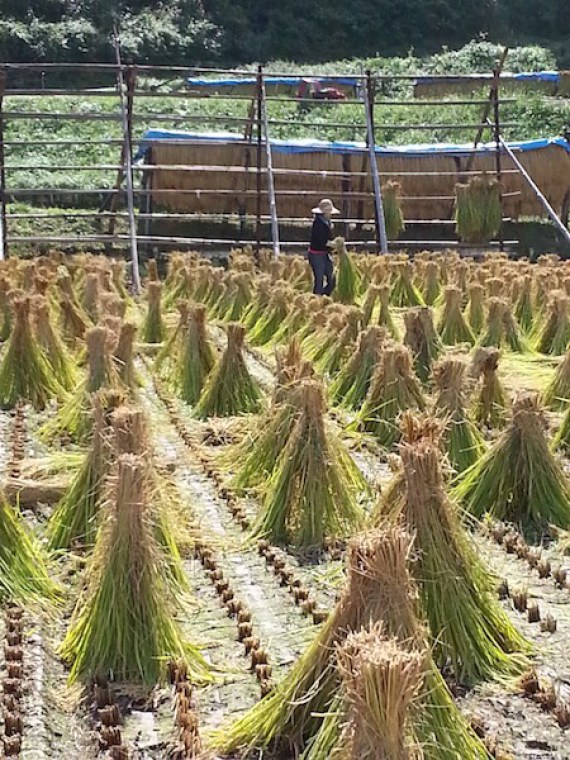
Traditional Japanese Rice Harvesting: Drying
There are two ways to dry Japanese rice. One is to run the rice through a drying machine, and the other is to let it dry in the sun gradually. The second method of drying for traditional rice harvesting makes the rice taste much better. However, it’s a very risky procedure, because it depends on the weather. If there are long periods of heavy rain, the drying process is affected. A drying machine is expensive, so many small rice farmers have no other option than to dry it the traditional way. Otherwise, they have to buy an expensive drying machine as a community.
Drying the rice for traditional rice harvesting in Japan takes teamwork. To reach the highest tier of the rice-drying rack one person has to climb up a ladder while the other person throws the bundles of rice. All bundles are hung upside down. Then the sun will do its job of drying the Japanese rice.
The time it takes to dry depends on the type of rice and the farmer’s preference. But usually, the rice stays on the drying racks longer than one week.
Traditional rice harvesting in Japan is really hard work, but it pays off to taste the rice your farmed yourself. Japanese rice farmers are always looking for help, so why not volunteer the next time you see a rice field during Fall or even try a farm stay?
WATTENTION NINJA WRITER PROFILE

From popular culture to traditional culture, I’ve immersed myself in both. I love writing about tradition, history and sharing fun discoveries. If I’m not outside watching a festival parade I’m leisurely reading manga in kimono.MORE ARTICLES BY THIS WRITER | ABOUT WATTENTION NINJA
 0
0

